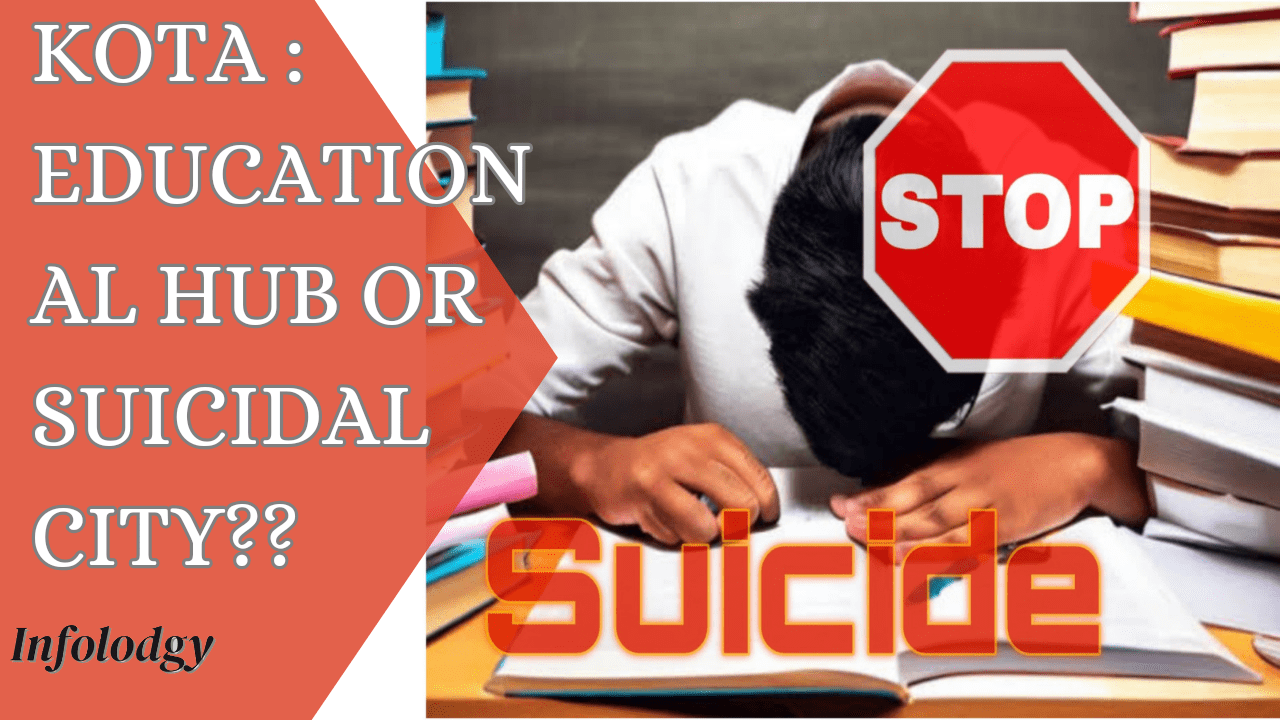Kota Suicide cases- young brains are in danger. Frustrated children or pressure cooker education system or silence government or Standardized society or pressure made by family; who is going to be blamed for these young generation.
The northern Indian city of Kota has long been referred to be the “coaching capital” of the nation, drawing students from all over the country who want to pass the difficult entrance tests for prestigious medical and engineering institutes. The current spike in student suicides in Kota, however, is casting a shadow over this centre of learning and raising questions about the extreme pressure these young brains are under from leading news of Kota suicide every year. We will examine the underlying causes, the results, and the steps being done to resolve this pressing issue in this article.
Year wise data of death at Kota
| Year | Number of death |
|---|---|
| 2023 | 23 (first 8 month data of the year) |
| 2022 | 15 |
| 2021 | 1 |
| 2020 | 4 |
| 2019 | 8 |
| 2018 | 12 |
| 2017 | 10 |
Reputation of Kota
The educational institutions in Kota have built a solid reputation for providing challenging instruction intended to prepare students for India’s most difficult entrance tests. With 12 sizable coaching centers and countless smaller ones, the city is home to nearly 200,000 pupils, some of whom are as young as 13. Many people’s hopes are fueled by the chance of admission to elite universities and excellent employment opportunities, but this also increases the load that these young people must bear.
Silent Struggle of student
Students in Kota frequently hide their academic failures because they live in a society where it is frequently stigmatized. Students spend lengthy periods of time studying alone due to the perfectionism- and competition-driven society. A setting like this might cause emotional distress and hopelessness. during a hundred students committed suicide in Kota during the course of the last ten years, including at least 25 in 2023.

The state government of Rajasthan has implemented more severe requirements for coaching institutes in Kota in response to an increase in student suicides. These regulations forbid making exam results public and discourage admissions to grades lower than nine. Additionally, there will be a bigger focus on mental health workshops, more banners promoting these services, and student support helplines. The new safeguards also include mandatory staff training and an “easy exit and refund policy” for troubled students.
Call for Cultural Transformation
Some contend that a total culture transition is required, despite the fact that these regulatory measures are a beginning in the right direction. Arnav Anurag, a student who endures oppressive study conditions in Kota, highlights the significance of understanding that there are several career choices outside of engineering and medicine. The foremost concern should always be a child’s safety.
Conclusion
Numerous students seeking to fulfil their goals have found hope in Kota’s educational system, but it has come at a high price, particularly in terms of mental health and well-being. It is urgent that structural adjustments be made in response to the alarmingly high percentage of student suicides. It is crucial to establish a supportive environment that puts students’ lives before their academic accomplishments. Kota has the capacity to fulfil ambitions without endangering the lives of children. It’s time for everyone to work together to change the pressure-cooker school system into one that puts the students’ overall wellbeing first.

